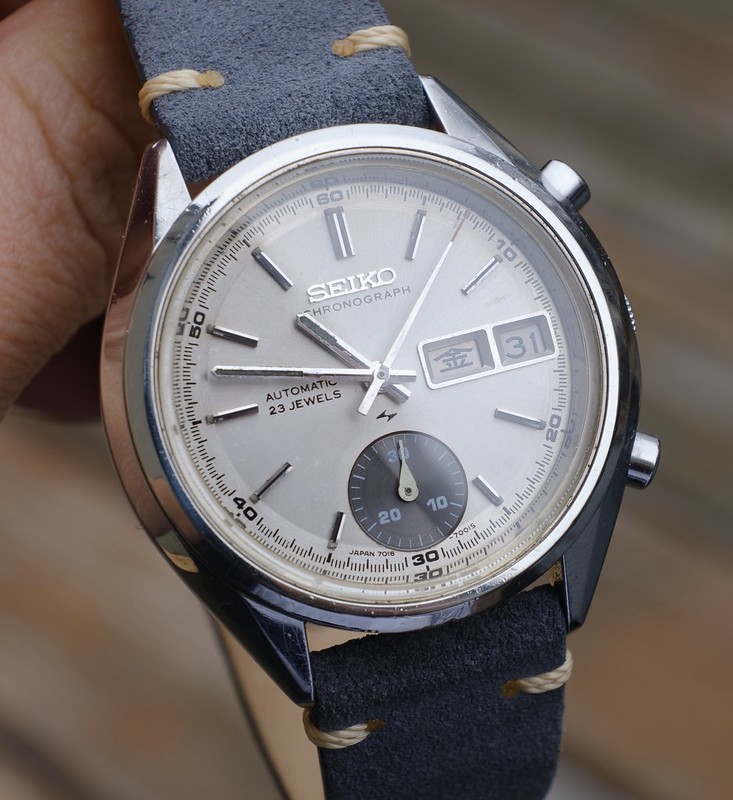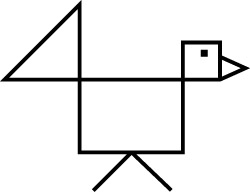The sweet exterior demeanor of this beautiful 1971 Seiko 7018-7000 Flyback Chronograph belies the technical powerhouse within; a bi-directional automatic winding, vertical-clutch, column-wheel, flyback chronograph with a Kanji day/date complication that held the record for world’s thinnest until 1987. It really does pack quite the punch.
That was quite a mouthful so let’s unpack it a bit.
1. Seiko employed their patented “magic lever” to provide bi-directional automatic winding to this movement. Able to harvest kinetic energy from the winding rotor in both directions, it is so efficient that Seiko did not find it necessary to supplement this movement with manual winding.
2. The vertical-clutch has to do with the way the chronograph is engaged with the gear train. It is technically superior to the more common lateral clutch systems in that it eliminates the second-hand “jump” when starting the timer ( as seen on 861 movement Omega Speedmasters).
3. A column-wheel is used to control the start-stop-reset modes of the chronograph. These are typically found in high-end chronographs due to the manufacturing costs, but practically speaking, the wearer experiences a smoother tactile response when depressing the pushers on a column wheel vs. more economical cam-levered movements.
4. The flyback complication allows you to restart the chronograph on-the-fly without having to first stop and reset it; useful when timing consecutive laps on the speedway.
5. And let’s not forget that cool Kanji day wheel which, together with the panda dial, give this watch an unmistakable late-60’s Japanese vintage vibe.
Perhaps best of all, while everyone is busy chasing after 6138 Pandas, the Seiko 7018-7000 Flyback Chronograph flies way under the radar. Given all of the technical features packed into this very wearable 38mm package, this one-eyed panda is easily one of the best values you’ll find on the vintage market.


Leave a Reply
You must be logged in to post a comment.